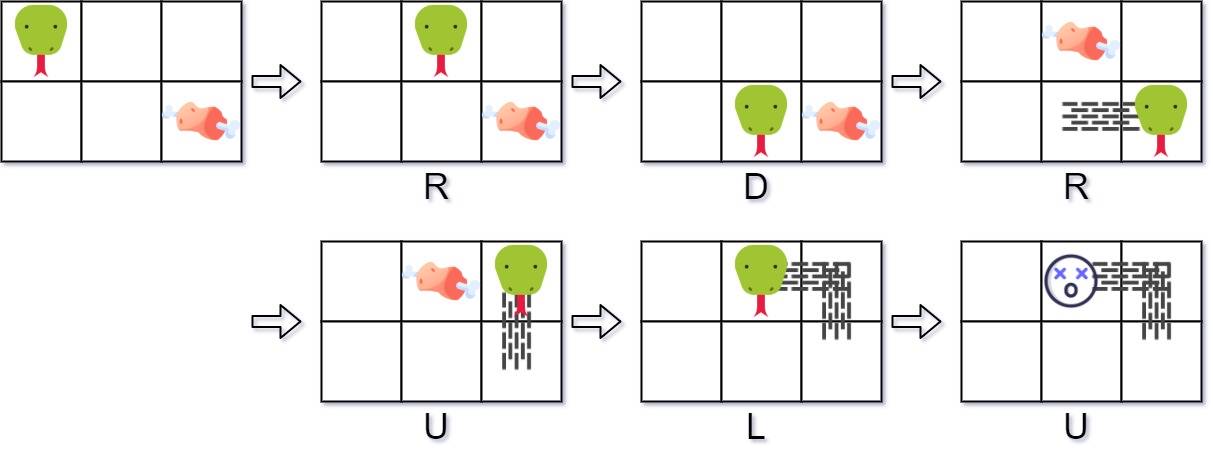353. Design Snake Game
Description
Difficulty: Medium
Related Topics: Array, Hash Table, Design, Queue, Simulation
Design a Snake game that is played on a device with screen size height x width. Play the game online if you are not familiar with the game.
The snake is initially positioned at the top left corner (0, 0) with a length of 1 unit.
You are given an array food where food[i] = (ri, ci) is the row and column position of a piece of food that the snake can eat. When a snake eats a piece of food, its length and the game’s score both increase by 1.
Each piece of food appears one by one on the screen, meaning the second piece of food will not appear until the snake eats the first piece of food.
When a piece of food appears on the screen, it is guaranteed that it will not appear on a block occupied by the snake.
The game is over if the snake goes out of bounds (hits a wall) or if its head occupies a space that its body occupies after moving (i.e. a snake of length 4 cannot run into itself).
Implement the SnakeGame class:
SnakeGame(int width, int height, int[][] food)Initializes the object with a screen of sizeheight x widthand the positions of thefood.int move(String direction)Returns the score of the game after applying onedirectionmove by the snake. If the game is over, return-1.
Example 1:

1 | Input |
Constraints:
- 1 <= width, height <= 104
1 <= food.length <= 50food[i].length == 2- 0 <= ri < height
- 0 <= ci < width
direction.length == 1directionis'U','D','L', or'R'.- At most 104 calls will be made to
move.
Hints/Notes
- use a queue + set to record where the head/tail is and if one node is in the snake
- remove the previous tail first before checking if the snake is hitting itself
Solution
Language: C++
1 | class SnakeGame { |